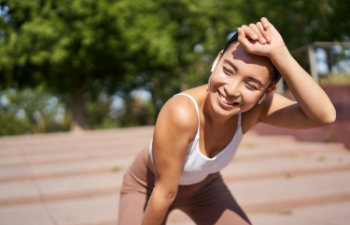
The streets of Manhattan witness thousands of runners daily, from Central Park joggers to marathon trainees pounding the pavement along the Hudson River. Yet despite their dedication to fitness, up to 79% of runners experience injuries annually that sideline their training and derail their goals.
Active Release Technique (ART) has emerged as a game-changing treatment approach that’s helping Manhattan runners overcome stubborn injuries, prevent future problems, and achieve peak performance levels previously thought impossible. This specialized manual therapy technique addresses the root causes of running-related injuries rather than simply masking symptoms.
The Science Behind Running Injuries and Tissue Dysfunction
Running places repetitive stress on the same muscle groups, tendons, and ligaments with every stride. Over time, this constant loading creates microscopic tears in soft tissues that heal with scar tissue formation. Unlike healthy tissue, scar tissue lacks elasticity and proper blood flow, creating adhesions that bind muscles, tendons, and nerves together.
These adhesions restrict normal movement patterns and create compensation mechanisms throughout the kinetic chain. A runner might develop tight IT bands that pull on the knee, causing patellofemoral pain syndrome. Or restricted calf muscles might alter foot strike patterns, leading to plantar fasciitis or Achilles tendinopathy.
Research indicates that 65% of running injuries are classified as overuse injuries, directly related to these cumulative tissue changes. Traditional treatments often focus on inflammation reduction without addressing the underlying adhesion patterns that perpetuate the problem cycle.
How Active Release Technique Transforms Runner Recovery
ART represents a paradigm shift in soft tissue treatment by specifically targeting adhesion patterns that develop in runners. This hands-on technique combines precise pressure with specific movement patterns to break up scar tissue and restore normal tissue function.
During an ART session, the practitioner identifies areas of abnormal texture, tension, and movement within muscles, tendons, ligaments, and fascia. They then apply targeted pressure while guiding the patient through specific movements that help separate adhered tissues and restore proper gliding between tissue layers.
The technique’s effectiveness stems from its ability to address multiple tissue types simultaneously. Unlike massage therapy that primarily targets muscles, ART can treat:
- Muscle Tissue: Releases tension and improves contractility
- Tendon Structures: Reduces adhesions that limit power transfer
- Ligament Complexes: Restores joint stability and proper mechanics
- Fascial Networks: Improves tissue gliding and movement efficiency
- Nerve Pathways: Eliminates entrapments that cause numbness or weakness
Common Running Injuries That Respond Exceptionally Well to ART
Manhattan runners face unique challenges from concrete surfaces, varying terrain, and environmental factors that contribute to specific injury patterns. ART has proven particularly effective for addressing these common running-related conditions:
- Iliotibial Band Syndrome: The repetitive hip flexion and knee extension of running often creates adhesions along the IT band and its attachment points. ART can effectively release these restrictions and address compensatory patterns in the hip and thigh muscles.
- Plantar Fasciitis: Chronic heel pain affects up to 15% of recreational runners. ART targets not only the plantar fascia itself but also related structures like the calf muscles, Achilles tendon, and foot intrinsics that contribute to abnormal tension patterns.
- Achilles Tendinopathy: The high forces transmitted through the Achilles tendon during running can create degenerative changes and adhesions. ART helps restore normal tendon mechanics and addresses contributing factors in the calf complex.
- Shin Splints: Medial tibial stress syndrome often develops from adhesions between the deep posterior compartment muscles and the tibia. ART can effectively separate these adhered tissues and restore normal muscle function.
- Hip Flexor Restrictions: Tight hip flexors from prolonged sitting combined with running volume create compensation patterns throughout the pelvis. ART addresses these restrictions while improving hip extension mechanics crucial for efficient running.
Performance Enhancement Beyond Injury Treatment
Elite runners and weekend warriors alike are discovering that ART provides benefits far beyond injury treatment. Regular ART sessions can significantly enhance running performance through several mechanisms:
- Improved Range of Motion: Unrestricted joints allow for optimal stride length and running economy. Studies show that improved hip extension alone can increase stride efficiency by up to 8%.
- Enhanced Power Transfer: When tissues move independently without adhesions, force transmission from muscle contraction to forward propulsion becomes more efficient, reducing energy waste during long runs.
- Better Movement Quality: ART helps restore proper movement patterns that may have been altered by previous injuries or compensation mechanisms, leading to more biomechanically sound running form.
- Faster Recovery Between Workouts: Improved tissue quality and circulation help runners bounce back more quickly from intense training sessions, allowing for higher training volumes without overuse injury development.
The Manhattan Runner’s Advantage with ART
Living and training in Manhattan presents unique challenges that make ART particularly valuable for local runners. The concrete surfaces, stop-and-start traffic patterns, and limited training space create specific stress patterns that benefit from targeted soft tissue work.
- Urban Surface Adaptation: Hard pavement running increases ground reaction forces and creates different loading patterns than trail running. ART helps tissues adapt to these demands while preventing overuse injuries.
- Limited Training Variety: Manhattan runners often follow repetitive routes due to space constraints. This repetition increases the likelihood of developing adhesion patterns that ART can effectively address.
- High-Stress Lifestyle Integration: The demanding pace of Manhattan life often includes long work hours and high stress levels that affect tissue quality and recovery. ART provides both physical and nervous system benefits that support overall well-being.
Maximizing ART Effectiveness for Running Performance
To achieve optimal results from ART treatment, runners should understand how to integrate this therapy into their overall training and recovery program:
- Treatment Timing: Schedule ART sessions during lower-intensity training weeks when possible. This allows the body to adapt to tissue changes without the stress of high-volume training.
- Movement Integration: Perform specific exercises and stretches recommended by your ART practitioner to maintain the improvements achieved during treatment sessions.
- Training Load Management: Work with your practitioner to modify training intensity and volume as needed during the initial treatment phases to support tissue healing and adaptation.
- Preventive Maintenance: Even after resolving acute issues, regular ART sessions can prevent future problems and maintain optimal tissue quality for peak performance.
What to Expect During Your ART Experience
First-time ART patients often wonder what to expect during their treatment sessions. The process typically begins with a comprehensive assessment of movement patterns, tissue quality, and specific problem areas identified through both palpation and functional testing.
Treatment itself involves the practitioner applying specific pressure to identified adhesion sites while guiding the patient through precise movements. The sensation is often described as intense but not unbearable, with most patients reporting immediate improvements in range of motion and comfort levels.
Session duration typically ranges from 15-30 minutes, depending on the number of areas being addressed and the complexity of the adhesion patterns present. Most runners notice significant improvements within 3-6 sessions, though chronic conditions may require longer treatment courses.
Integrating ART into Your Manhattan Running Routine
Successful integration of ART into a running routine requires strategic planning and clear communication with your practitioner about training goals and schedules. Many Manhattan runners find that scheduling sessions during lunch breaks or early morning hours works best with their demanding schedules.
The key is consistency rather than frequency. Regular sessions every 2-3 weeks for maintenance, with more frequent treatments during injury recovery phases, typically produces optimal results for most runners.
Manhattan Sports Therapy specializes in understanding the unique demands placed on urban runners and provides ART treatments specifically tailored to address these challenges. Our experienced practitioners work closely with runners of all levels to develop comprehensive treatment plans that support both injury recovery and performance enhancement goals.
Don’t let adhesions and tissue restrictions limit your running potential. Experience the transformative benefits of Active Release Technique and discover why Manhattan’s most successful runners trust Manhattan Sports Therapy for their soft tissue treatment needs.
Posted on behalf of
515 Madison Avenue FL 22A
New York, NY 10022
Phone: (212) 310-0100
Email: sportstherapy150@icloud.com


